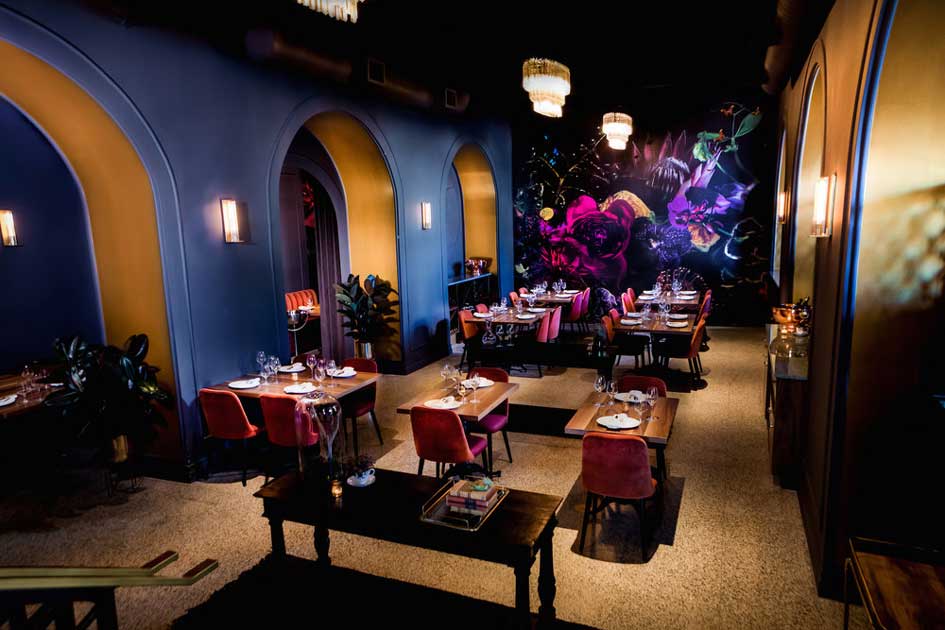Romantic Restaurants Islamabad: Perfect Dining Locations for Pairs
Romantic Restaurants Islamabad: Perfect Dining Locations for Pairs
Blog Article
Savor Authentic Oriental Cuisine With a Pan-Asian Twist for a Cooking Journey
Beginning on a cooking trip through authentic Oriental cuisine, enhanced with a Pan-Asian twist, provides a distinct chance to check out the rich tapestry of tastes that specify the area's varied culinary practices. This experience welcomes you to appreciate the exquisite equilibrium of preferences-- sweet, salted, spicy, and sour-- balanced by aromatic natural herbs and seasonings. Imagine the innovative blend of Thai curry and ramen or the unforeseen pleasure of sushi burritos. As you contemplate these tempting meals, think about the social narratives and historic influences that form them, each bite offering a tale waiting to be discovered.

Exploring Pan-Asian Tastes
In the world of worldwide gastronomy, Pan-Asian cuisine stands out for its exceptional diversity and the unified interplay of flavors from different Eastern cultures. This culinary strategy commemorates the special ingredients and abundant practices discovered throughout the continent, developing a tapestry of preferences that is both appealing and rewarding. Trick to Pan-Asian food is its capacity to stabilize contrasting tastes-- pleasant, salted, spicy, and sour-- while highlighting the quality and top quality of each component.
From the umami-rich soy sauce of Japan to the fiery chili peppers of Thailand, Pan-Asian cuisine uses a considerable scheme of flavors. These elements are often integrated in innovative ways, improving recipes with layers of intricacy. For circumstances, making use of great smelling herbs such as lemongrass and cilantro, typical in Vietnamese and Thai cuisine, adds a revitalizing illumination to dishes, while the unification of coconut milk supplies a velvety, rich structure.
The focus on fresh fruit and vegetables and aromatic flavors guarantees that each meal is not only a feast for the palate however likewise for the senses. Pan-Asian cuisine invites restaurants to get started on a cooking trip, discovering the substantial and differed landscapes of Eastern gastronomy with every bite.
Blend Recipes to Attempt
While Pan-Asian food is celebrated for its traditional tastes, the contemporary culinary landscape is progressively accepting blend dishes that blend these timeless aspects with influences from other regions. This innovative technique not just honors the rich heritage of Asian cookeries yet also introduces unique preference experiences that attract contemporary tastes buds.
A prime example of such a blend meal is the Korean-Mexican taco, where seasoned bulgogi beef is wrapped in a warm tortilla, topped with kimchi and a spicy gochujang-infused salsa. This combination weds the bold, mouthwatering tastes of Korea with the vivid, fresh elements of Mexican food. Similarly, sushi burritos have actually acquired appeal, amalgamating the fragile creativity of Japanese sushi with the passionate, hand-held convenience of a burrito, often including blend components like tempura shrimp and avocado with a drizzle of wasabi mayo.
Another notable meal is Thai curry ramen, which instills the velvety, aromatic spices of Thai curry into the comforting brew of typical Japanese ramen, developing a harmonious mix that entices the senses. These blend meals extend past plain novelty; they stand for a culinary dialogue in between societies, urging exploration and development worldwide of Pan-Asian food.
Necessary Components and Flavors
To absolutely appreciate Pan-Asian food, one need to comprehend the essential components and flavors that develop its foundation. This diverse cooking design attracts from an abundant tapestry of Asian traditions, employing a harmonious blend of structures and tastes. Key active ingredients consist of soy sauce, fish sauce, and oyster sauce, which impart a tasty umami deepness vital to Eastern dishes. Corresponding to these are rice vinegar and mirin, offering a fragile level of acidity and sweet taste.
Fragrant elements are essential, with ginger, lemongrass, and garlic being ubiquitous throughout numerous Pan-Asian dishes. These components offer a great smelling base that boosts the complexity of tastes. Flavors such as star anise, cardamom, and cinnamon present warmth and personality, resembling influences from regions like China and India.

Cooking Methods and Tips
Grasping the art of Pan-Asian cuisine requires familiarity with its unique food preparation strategies, each contributing to the lively tapestry of flavors this cooking tradition is commemorated for. Central to these approaches is the stir-fry, a rapid food preparation technique that protects the dietary honesty and dazzling shades of components. Using a frying pan, the stir-fry method allows for even warmth distribution, necessary for accomplishing the particular structure and flavor Full Report balance of Pan-Asian meals.
An additional essential method is steaming, particularly common in Chinese food. This mild approach keeps the natural flavors and nutrients of active ingredients, making it perfect for fish and shellfish and vegetables. Dumplings, a beloved staple, typically take advantage of steaming, leading to soft, succulent textures.
Grilling, also indispensable, passes on smoky midsts to meals such as Oriental bulgogi or Japanese yakitori (best asian restaurant Islamabad). This strategy typically involves marinating active ingredients, allowing tastes to permeate deeply before food preparation over an open fire or warmer
Finally, mastering the art of stabilizing flavors-- pleasant, sour, salted, bitter, and umami-- is vital. Properly layering these aspects can elevate a dish from regular to phenomenal, offering a complex and satisfying cooking experience that symbolizes the significance of Pan-Asian food.
Eating Experiences Worldwide
Around the world, Pan-Asian cuisine offers an unparalleled eating experience, celebrated for its abundant tapestry of flavors and dynamic presentations. This cooking phenomenon has transcended social limits, recording the hearts and tastes buds of food fanatics worldwide. In cosmopolitan cities fresh York, London, and Sydney, Pan-Asian dining establishments serve as fusions where culinary practices from Thailand, Japan, China, and beyond converge, providing restaurants with a diverse mix of recipes that highlight the region's diversity.
The worldwide charm of Pan-Asian food exists in its capacity to use both credibility and development. Cooks masterfully wed standard active ingredients such as lemongrass, soy sauce, and miso with contemporary methods, resulting in recipes that are both acquainted and refreshingly new. This combination enables diners to embark on a cooking journey that appreciates heritage while embracing modernity.
In addition, dining experiences are raised through thoughtfully developed environments that mirror the values of Pan-Asian looks. From minimal Japanese-inspired insides to vibrant Thai-themed rooms, each restaurant provides a distinct setting that complements the cooking offerings. Consequently, customers are not merely consuming a dish yet partaking in a social experience, making Pan-Asian dining a truly worldwide phenomenon.
Conclusion
The expedition of Pan-Asian cuisine provides an extensive understanding of the elaborate interplay of tastes and cooking traditions throughout Asia. By accepting fusion meals such as Thai curry ramen and sushi burritos, the culinary trip not just highlights the versatility of conventional components but additionally showcases ingenious modern strategies. This gastronomic journey, enhanced by cooking approaches and crucial flavors, gives a special chance to appreciate the multiculturalism and culinary creativity that define Pan-Asian cuisine on a global scale.
Getting started on a culinary trip via genuine Oriental food, enhanced with a Pan-Asian twist, uses a special opportunity to check out the abundant tapestry of flavors that define the region's varied culinary customs.In the world of international gastronomy, Pan-Asian cuisine stands out for its exceptional variety and the harmonious interaction of flavors from numerous Asian societies. Key to Pan-Asian food is its ability to balance contrasting tastes-- sushi hiro sweet, salted, spicy, and sour-- while highlighting the quality and high quality of each active ingredient.

Report this page